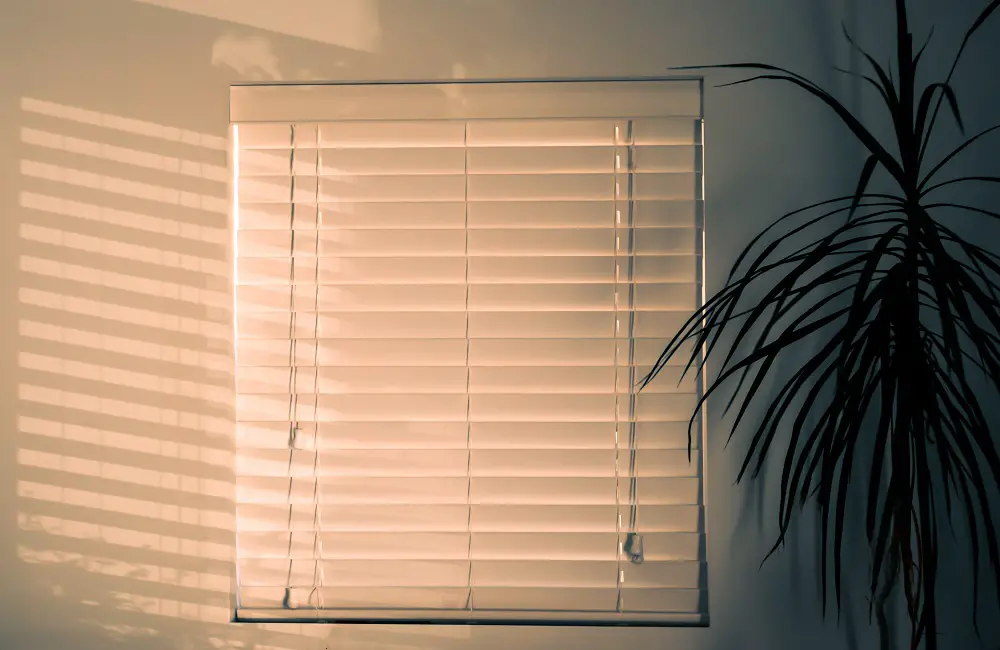The way we decorate our bedrooms can make a big impact on how comfortable and relaxed we feel in our own personal space. One major decision that many homeowners grapple with is whether to hang curtains or install blinds on bedroom windows.
Both options have their pros and cons, so it can be tough to determine which is the right choice for your particular needs. In this post, we’ll explore the benefits and drawbacks of each option to help you make an informed decision.
What Is The Difference Between Curtains And Blinds?
The first difference between curtains and blinds is their construction. Curtains are made of cloth panels that hang from rods. They are available in a variety of materials such as cotton, linen, silk, and polyester, and they come in different sizes, patterns, and colors to fit various window sizes and decor. On the other hand, blinds are made of slats or vanes connected by cords or tapes. They can come in different materials like wood, PVC, or aluminum and can be adjusted to control the amount of light that enters the room.
One of the most significant differences between curtains and blinds is how they control light. Curtains typically do not offer as much light control as blinds. They can be opened or closed, but they do not provide the ability to adjust the amount of daylight entering the room.

Blinds, on the other hand, allow you to adjust the angle of each slat to filter the amount of light that comes in, and they can block out light more effectively if you choose blackout blinds. This makes blinds an excellent choice for rooms where you need complete darkness, such as bedrooms.
Another difference between curtains and blinds is their insulation properties. Because curtains are made of fabric, they offer greater insulation than blinds. Curtains can help keep your home warm by keeping drafts out during cold seasons.

In contrast, blinds have gaps between their slats that can allow air to circulate. However, if you want to improve insulation with blinds, you can go for honeycomb shades that provide insulation because of their cellular design.
Maintenance is also a factor in choosing between curtains and blinds. Curtains are easier to wash and maintain since most of them can be machine washed or hand washed. Blinds, on the other hand, require more labor-intensive cleaning. However, blinds are low-maintenance when it comes to everyday maintenance since they can be swiped with a damp cloth to clean.
Should Bedrooms Have Curtains Or Blinds?

Let’s start with the benefits of curtains. One major advantage is that curtains come in a wide range of fabrics, colors, patterns, and sizes, which makes them a versatile and customizable option for any bedroom style.
Heavy curtains can also provide excellent insulation in colder months and block out natural light for better sleep, making them ideal for people who are light-sensitive or live in cities with bright streetlights. On the downside, curtains can be more difficult to clean, and they tend to take up more space than blinds when opened fully, which can be an issue in smaller bedrooms.
Blinds, on the other hand, are a popular choice for their sleek, modern look and easy maintenance. They come in a variety of materials, from wood to vinyl to metal, and can be adjusted to let in as much or as little light as desired.
Blinds are particularly practical for bedrooms with large windows, as they allow for more privacy and light control than curtains without taking up as much space. One downside, however, is that blinds can be noisy when opened or closed, which can be a nuisance for light sleepers or those with partners who work different shifts.
Another factor to consider is how well each option matches the overall aesthetic of your bedroom. Curtains tend to work well with traditional or bohemian-style bedrooms, while blinds are often favored in modern or minimalist spaces.
Of course, there are no hard and fast rules when it comes to decorating, so feel free to mix and match as you see fit. Just keep in mind that curtains will make a bolder statement and draw more attention, while blinds will blend in more seamlessly with the surroundings.
When making your decision, it’s also important to think about your budget and energy efficiency needs. While high-quality curtains can be expensive, they can pay off in the long run with their insulating properties.
Blinds are generally more cost-effective upfront, but they may not offer the same level of energy savings. Bear in mind that both options can be customized with liners or thermal backing to enhance their insulating qualities.
Can I Put Blinds And Curtains Together In My Bedroom?

The answer is absolutely yes! In fact, many designers recommend using both blinds and curtains in conjunction with each other. By combining these two window treatments, you can achieve the best of both worlds.
Blinds are great for controlling light and providing privacy, while curtains add warmth, style and texture to the room. Furthermore, a combination of blinds and curtains can add a cozy feel to the room and soften harsh lines of bare blinds.
One major benefit of combining blinds and curtains is that it provides flexibility in light control. During the day, you can have the blinds down to let in natural light while keeping privacy.
In the evening, you can draw the curtains to create a more intimate and cozy atmosphere in the room. Having both window treatments together allows for a greater control of light and privacy than curtains or blinds alone.
When combining blinds and curtains in your bedroom, one aspect to consider is color. It is important to choose colors that complement one another and do not compete for attention. For example, if your blinds have a bold pattern or texture, then opting for simple curtains in a neutral color will help to create balance and enhance the decor.
But if your blinds have a solid color, then adding curtains with beautiful prints can spice up your decor and bring in some personality.
Another aspect to consider when deciding on window treatments is the size of the room. If the room is small or has low ceilings, opting for curtains that blend with wall colors can give the illusion of higher ceilings and wider spaces. By utilizing both blinds and curtains together, you can create the appearance of a more expansive environment.
Wrapping Up
Ultimately, whether you opt for curtains or blinds in your bedroom will depend on your personal preferences, lifestyle, and budget. Remember that it’s not necessarily an either-or situation; you can always use a combination of the two to achieve the perfect balance of style, privacy, and practicality. Whichever option you choose, make sure it complements the overall look and feel of your bedroom while serving your practical needs. Happy decorating!

